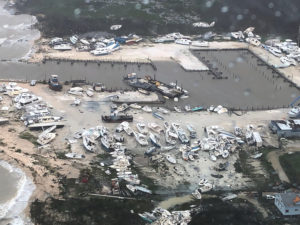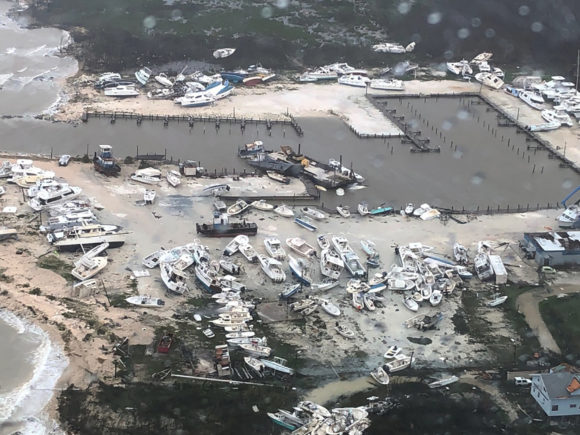Some of the first financial relief the Bahamas receives in the aftermath of Hurricane Dorian may be a rapid insurance payout from a novel program just 12 years old.
CCRIF, once short for the Caribbean Catastrophe Risk Insurance Facility, was established in 2007 to provide funds for countries hit by cyclones, earthquakes or extraordinary rainfall. The segregated portfolio company is an example of parametric insurance, designed to make immediate injections of money in the wake of a catastrophe. Funds are deployed within two weeks of a disaster and are based not on after-the-fact damage assessments—which can take months—but on metrics predetermined by a country’s particular risk.
Those payments “are usually used for the most immediate needs,” said Leonardo Martinez-Diaz, global director of the nonprofit research group World Resources Institute’s Sustainable Finance Center. “Keeping airports open, clearing debris from roads, paying nurses and law enforcement—the key elements that are under threat in immediate aftermath of a disaster like this.”
WRI on Tuesday published an assessment of how sovereign parametric insurance, which is purchased by governments, is faring as climate change supercharges natural disasters.
The programs are helping, the researchers found. CCRIF has paid out $139 million to 13 countries since its launch in 2007. Haiti received $20.4 million in the immediate aftermath of Hurricane Mathew, which killed more than 500 people there in October 2016. Dominica received $19.3 million in 2017 after Hurricane Maria, where at least 31 people died. The remainder of the fund’s 36 other payouts have been for smaller amounts, ranging from hundreds of thousands to single-digit millions of dollars.

Such sums are not sufficient to protect nations from harm and help them recover, according to the WRI report. Parametric risk should be deployed as part of a “risk-layering” approach that includes private insurance, foreign aid, concessional loans and national recovery funds, the researchers find. The report also reviewed African Risk Capacity, a program begun in 2012 to pool resources for drought coverage and the Pacific Catastrophe Risk Insurance Company, which started in 2016 to help with climate and earthquake risks.
The Bahamas, which has bought insurance from CCRIF since its launch, is one of 21 nations who pool their capital and risk into the organization. CCRIF has worked with members in recent years to lower its premiums in an effort to make participation in the pool more sustainable. Since its inception, coverage has extended beyond Caribbean governments into Central America. The details of each country’s policies are undisclosed.
CCRIF could not immediately be reached for comment.
Was this article valuable?
Here are more articles you may enjoy.


 Supreme Court Allows More Transport Workers to Bypass Arbitration and Sue Employers
Supreme Court Allows More Transport Workers to Bypass Arbitration and Sue Employers  MGM Resorts Sues US FTC to Stop Investigation of Casino Hack
MGM Resorts Sues US FTC to Stop Investigation of Casino Hack  Texas Among Several States Facing New Fire Risks: Weather Watch
Texas Among Several States Facing New Fire Risks: Weather Watch  Travelers Survey: Distracted Drivers Making US Roads More Dangerous
Travelers Survey: Distracted Drivers Making US Roads More Dangerous 